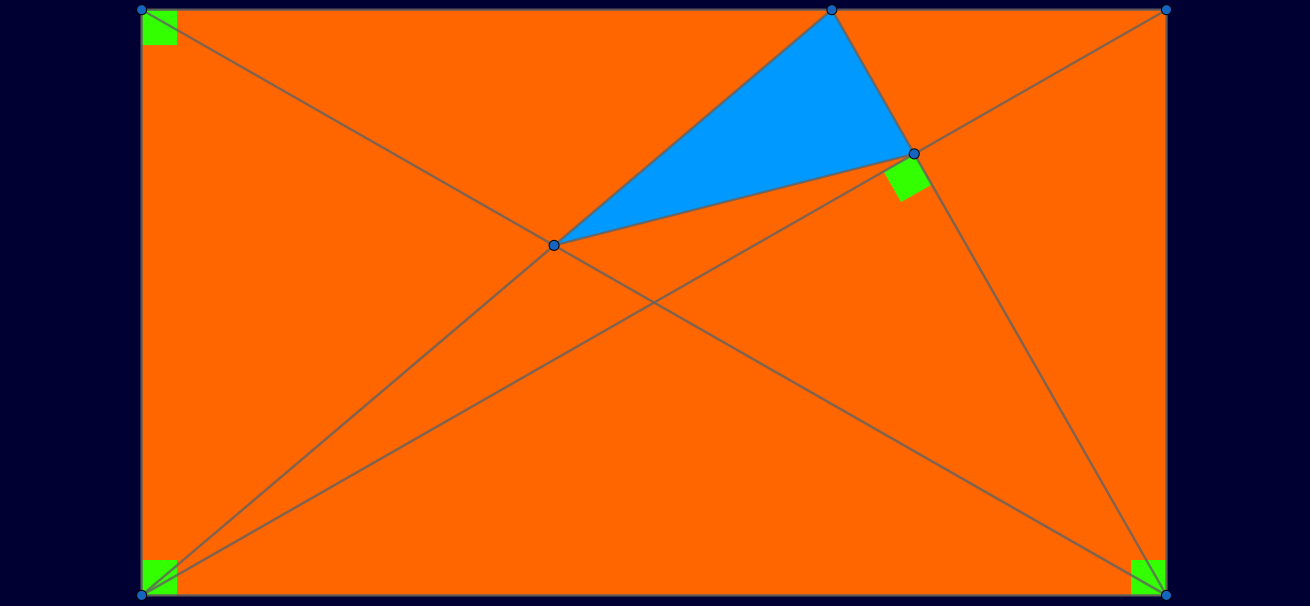Squares won't help you.
Geometry
Level
5

What is the minimum value of the ratio between the orange-colored area and the area of the blue-colored area?
The answer is 17.
This section requires Javascript.
You are seeing this because something didn't load right. We suggest you, (a) try
refreshing the page, (b) enabling javascript if it is disabled on your browser and,
finally, (c)
loading the
non-javascript version of this page
. We're sorry about the hassle.
If the rectangle corners have coordinates ( 0 , 0 ) , ( 1 , 0 ) , ( 1 , X ) and ( 0 , X ) , where 0 < X < 1 , then the fact that the marked angle inside the rectangle is a right angle means that the coordinate of the vertex of the blue triangle along the top edge is ( 1 − X 2 , X ) . Solving elementary simultaneous equations gives us the coordinates of the other two vertices of the blue triangle as ( 2 − X 2 1 − X 2 , 2 − X 2 X ) ( X 2 + 1 1 , X 2 + 1 X ) Thus we can calculate the area of the blue triangle as A B = 4 + 2 X 2 − 2 X 4 X 3 − X 5 while the remaining orange area is A O = X − A B = 4 + 2 X 2 − 2 X 4 4 X + X 3 − X 5 Thus we have the ratio A B A O = X 2 − X 4 4 + X 2 − X 4 = 1 + X 2 ( 1 − X 2 ) 4 which is minimized, taking the value 1 7 , when X 2 = 2 1 .